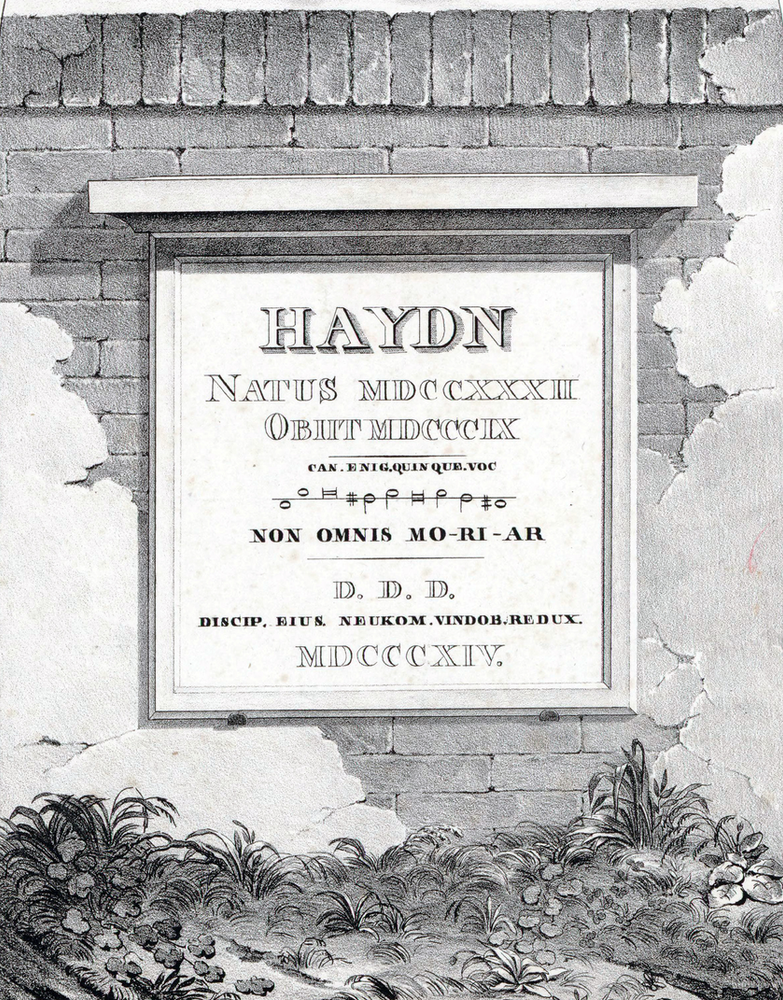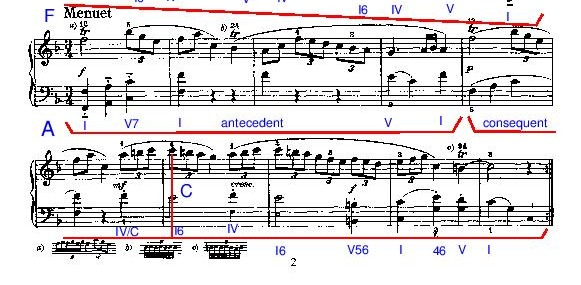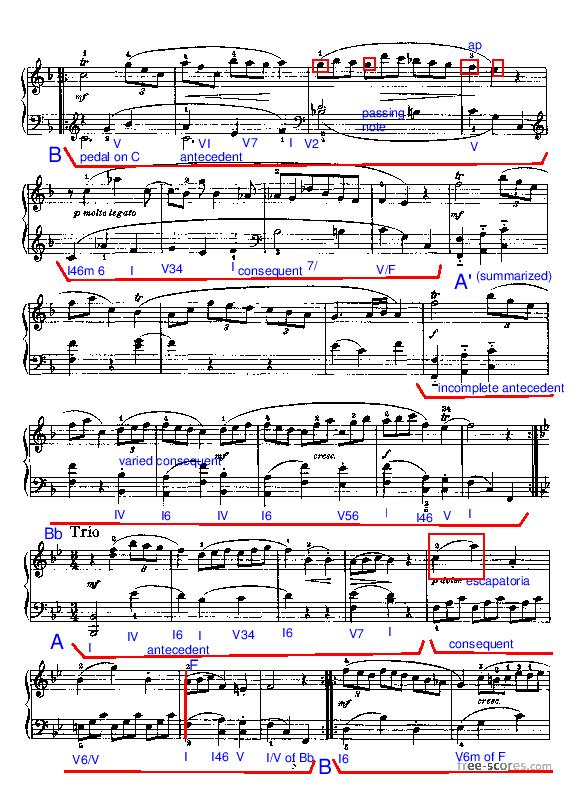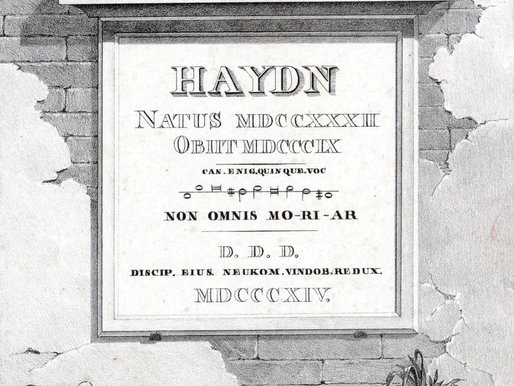Haydn Sonatas, Uncategorized
Haydn Sonata in F Hob. XVI:9 Minuet and Trio

Haydn minuets

MINUET
Another Minuet that looks like borrowed from a Baroque suite. Plain A-B-A structure; this time ending in a contracted “A’”. “B” reminds of the development of the first movement, organized around a dominant pedal note.
“A” mainly explores the use an arpeggiated melodic line in both the treble and the bass. In the treble the principal motivic elements are the arpeggio and the link-by-two. These ones are alternated by short “scalistic” episodes. The bass is written using almost exclusively the main motivic elements of the treble; it simply accompanies and supports the melodic line of its counterpart. “A” modulates to the dominant leaving the harmonic path ready for “B” to take over without the need of a modulatory passage.
“B” blends the use of arpeggios and scales by linking the focal points of the former ones in an ascending scale -bars 11 and 12-. Something similar happens in bars 13 and 14 if we link the red rectangles (focal points); now the three main elements: arpeggios, scales and appogiaturas are blend in the same single passage. It is interesting to highlight the modal turn in bar 15 which quickly heads back towards F major. This very sudden but subtle change helps refreshing the atmosphere of the piece quite notoriously before re-exposing A entirely in the tonic.
“A’” is a contracted version of “A”; its antecedent is cut short in order to continue with the consequent in the tonic giving end to the piece the same key.

TRIO
This trio is structured in two different phrases exposed and repeated once each one of them.
“A” in Bb is organised as a sentence which alternates the rhythmic content of the bass exposing in the treble within the antecedent and in the bass within the consequent. In each case the triplets will hold very distinctive roles; main melodic line first and then mere accompaniment. In addition to the rhythm the melodic profile of the antecedent explores the possibilities of the scalistic gesture, chaining short scales leading to crotches. The lines in the consequent are clearly more open; we can highlight the escapatoria motive in bars 33 and 34. Harmonically speaking “A” touches F immediately before the end of the piece before ending in half-cadence, leaving the turn ready for the tonic to come back in “B”
“B” explores again the escapatoria motive of “A”’s consequent; first in the bass and finally in the treble. The same strategy of touching F as a short tonal centre is used in “B”’s antecedent.
The symmetry in the treatment of “A” and “B” main motives is remarkable. In “A” the main motivic content is exposed first in the treble and then in the bass in the antecedent and this is exactly the opposite to what happens in “B”. The same strategy is used to deal with the instances in which F becomes tonal centre: first in “A”’s consequent and then in “B”’s antecedent.

#HaydnProject #pianolessonslondon #Haydnproject

